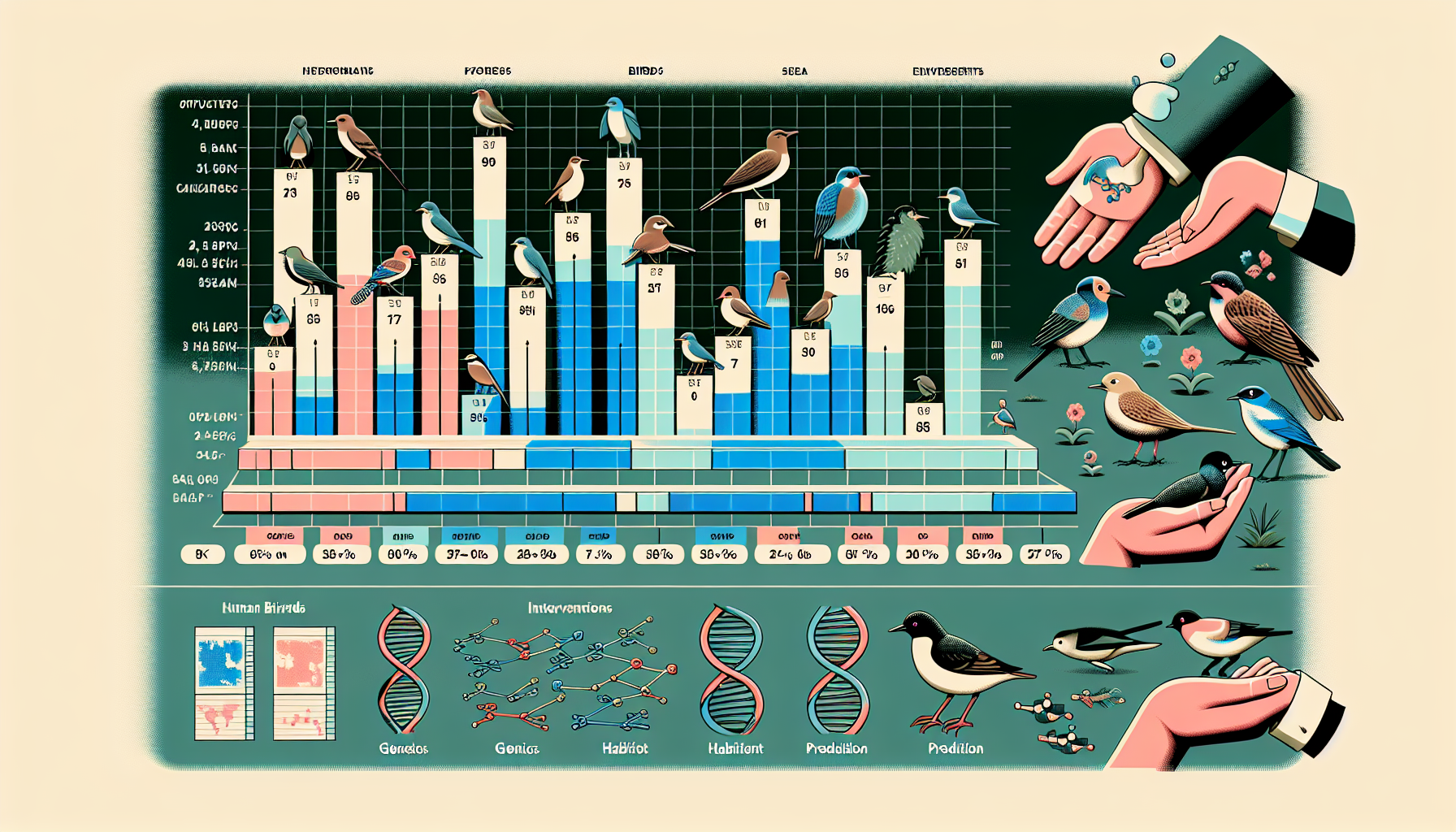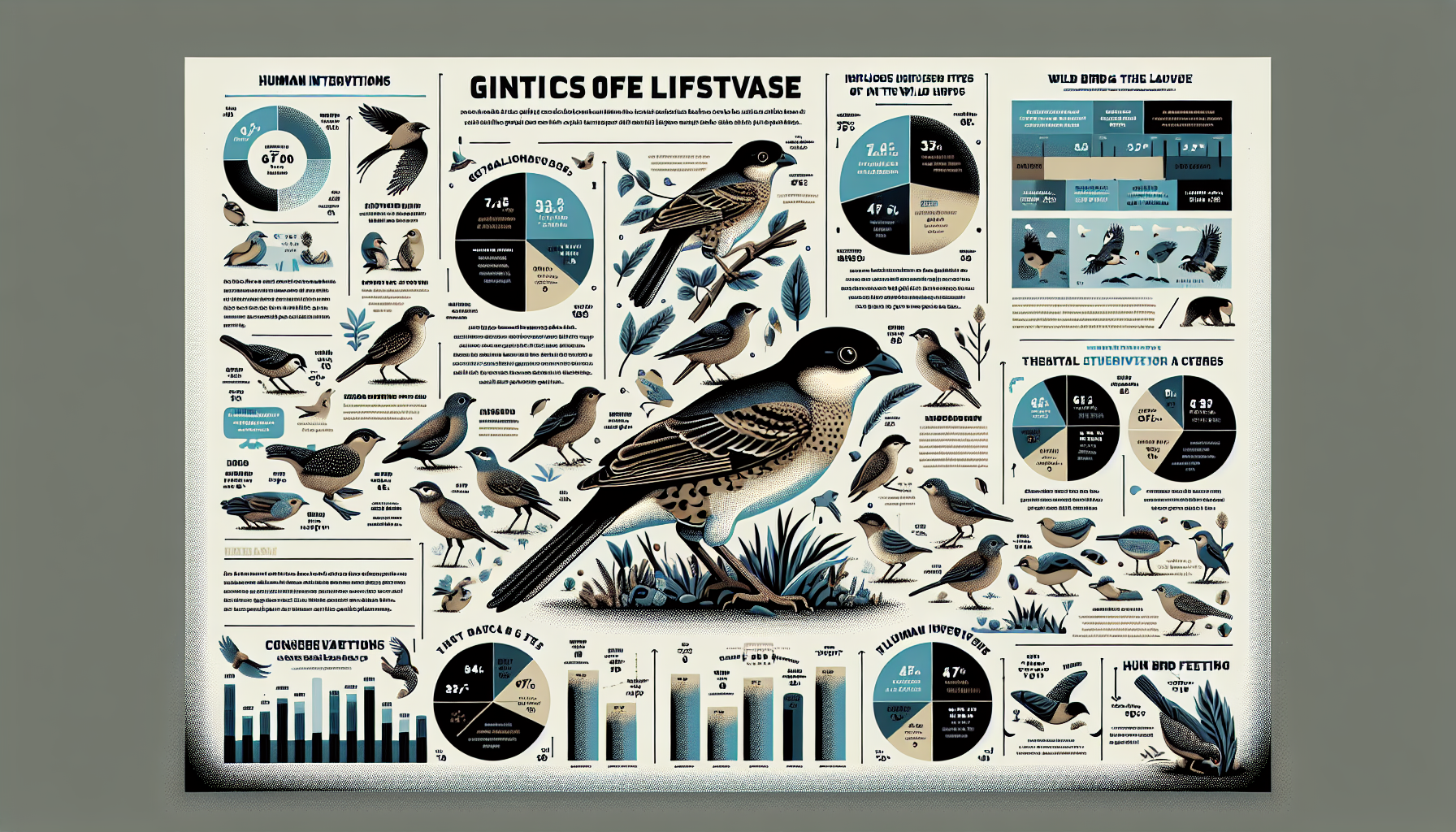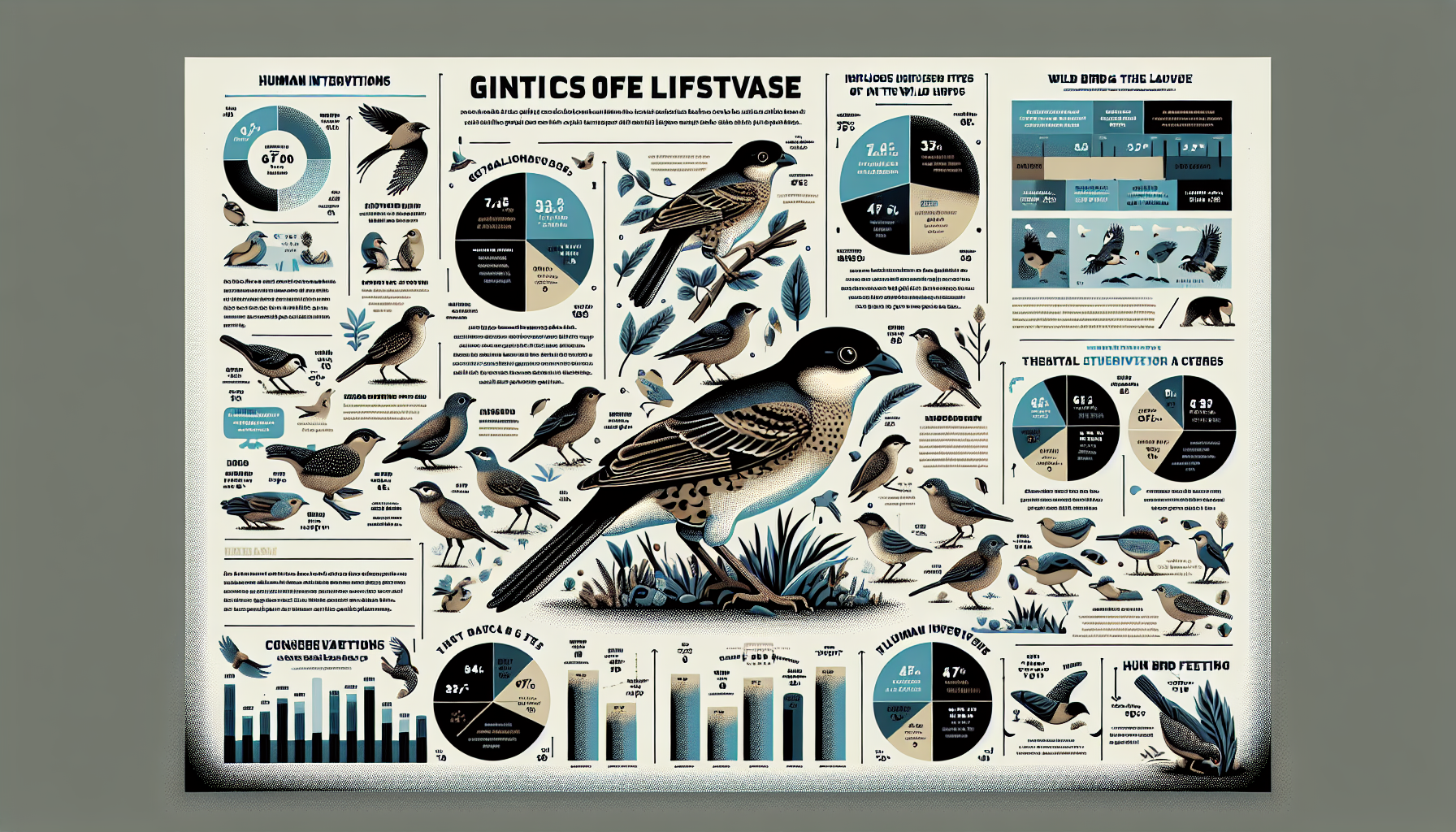Have you ever wondered about the mysterious lifespans of wild birds? Intriguing and diverse, these captivating creatures have always fascinated humans. From the soaring majestic eagles to the tiny and nimble hummingbirds, their lifespans vary greatly. Today, we will explore the fascinating question of how long wild birds live, uncovering the secrets behind their remarkable resilience and survival in the ever-changing natural world. So, let’s embark on this journey together and discover the astounding lifespans of our feathered friends.
Generally, larger birds live longer than smaller birds. Albatrosses, for example, can soar for 60 years or more, while tiny hummingbirds may only reach 5-8 years.
Factors Affecting Bird Lifespan
Bird lifespan can be influenced by various factors, including their size and species, environmental conditions, predation, and threats they face. Understanding these factors is essential for gaining insights into the average lifespan of different bird species, as well as identifying the exceptional cases of longevity or short life spans observed in the wild. This knowledge is crucial for conservation efforts and assessing the overall health of ecosystems.
Average Lifespan of Different Bird Species
Songbirds
Songbirds, often known for their melodious calls, exhibit a wide range of lifespans. While some species may only live for a few years, others can survive for more than a decade. On average, songbirds have an expected lifespan of around 5 to 10 years. However, some long-lived species like the American Robin can live up to 14 years in the wild. The diversity in songbird lifespans can be attributed to variations in their ecological niche, migration patterns, and reproductive strategies.
Water Birds
Water birds, such as ducks, geese, and herons, have varying lifespans depending on their species and habitat. Some smaller water birds may have shorter lifespans of around 3 to 5 years, whereas larger species like swans or pelicans can live for more than 20 years. Factors such as the availability of food, nesting sites, and exposure to threats like pollution can influence the lifespan of water birds.
Birds of Prey
Birds of prey, including eagles, hawks, and owls, are known for their exceptional hunting skills. These magnificent creatures typically have longer lifespans compared to many other bird species. Some eagles and owls have been recorded to live up to 30 years in the wild. Their longevity can be attributed to their position at the top of the food chain, minimizing predation risks, and their ability to adapt to various environments.
Game Birds
Game birds, such as pheasants, grouse, and quail, often face substantial hunting pressure. Consequently, their lifespans tend to be shorter compared to other bird species. On average, game birds typically live for 1 to 3 years in the wild. However, factors like protected hunting areas or managed populations can extend their lifespan and ensure their conservation for recreational purposes.
Seabirds
Seabirds have adapted to harsh marine environments and have intriguing lifespans. Some species, like albatrosses, can survive for several decades. Incredibly, the Wandering Albatross holds the record for the longest-lived wild bird, with one individual recorded to have lived for over 60 years. Seabirds face unique challenges in their habitat, including competition for resources, the risk of oil spills, and the impact of climate change, which can affect their overall lifespan.

Exceptional Longevity in Wild Birds
Albatross
As mentioned earlier, albatrosses are known for their exceptional longevity. These large seabirds have been found to live for more than 50 years on average. One key factor contributing to their long lifespan is their low reproductive rate. Albatrosses take several years to reach sexual maturity and typically produce only one offspring every few years. This reproductive strategy, combined with their ability to navigate vast oceanic territories, allows them to thrive and live long lives.
Swans
Swans, renowned for their elegance and grace, also exhibit impressive longevity in the wild. Depending on the species, swans can live for 10 to 20 years or even longer. Their ability to adapt to various habitats, including wetlands and freshwater lakes, contributes to their extended lifespan. Swans are monogamous birds, forming long-lasting pair bonds that can strengthen their chances of survival and enhance their overall lifespan.
Black-capped Chickadee
Among the smaller bird species, the Black-capped Chickadee stands out for its exceptional longevity. Despite its diminutive size, this songbird can live for up to 12 years in the wild. The Black-capped Chickadee’s resilience and adaptability, coupled with its ability to cache food for winter survival, contribute to its relatively long lifespan. These charismatic birds are known for their acrobatic behavior and their distinctive vocalizations that enliven forests across North America.
Short-Lived Wild Birds
Hummingbirds
Hummingbirds, despite their vibrant colors and energetic flight, have relatively short lifespans compared to other bird species. On average, hummingbirds live for about 3 to 5 years in the wild. Their high metabolic rate and constant need for energy make their lives particularly challenging. To maximize their chances of survival, hummingbirds engage in nectar-gathering behaviors and require an abundant supply of nectar-rich flowers.
Quails
Quails, small ground-dwelling birds known for their distinctive calls, have relatively short lifespans as well. Most quail species live for approximately 2 to 3 years in the wild. Factors such as predation, habitat loss, and limited access to food and shelter contribute to their shorter lifespan. However, quails can reproduce rapidly and have the ability to bounce back from population declines under favorable environmental conditions.
Survival Challenges for Wild Birds
Migration and Exhaustion
Migration is a remarkable phenomenon seen in many bird species, providing them with access to diverse food sources and suitable breeding grounds. However, migration also poses significant challenges and risks to their survival. Birds undertaking long-distance migrations, such as shorebirds or Arctic terns, face exhausting journeys spanning thousands of miles. The physical exertion required during migration can lead to exhaustion, reducing their overall lifespan.
Disease and Parasites
Like any other living organism, wild birds are susceptible to diseases and parasitic infections. Avian diseases, such as avian influenza or West Nile virus, have the potential to cause severe mortality. Parasites, including ticks, lice, and mites, can infest birds’ feathers, leading to discomfort, compromised health, and reduced lifespan. Effective disease management strategies and habitat conservation measures are crucial for minimizing the impact of these challenges.
Climate Change
The effects of climate change pose a significant threat to bird populations worldwide. Changing weather patterns, altered precipitation levels, and habitat disruptions can disrupt food availability and nesting conditions, impacting bird survival. Many species may struggle to adapt quickly enough to changing environmental conditions, which can lead to population declines and shorter lifespans.
Habitat Loss
One of the most serious threats to bird populations is habitat loss. Deforestation, urbanization, and the degradation of natural habitats are major contributors to the decline of many bird species. Loss of suitable nesting sites, food sources, and shelter increases their vulnerability to predation, disease, and the overall challenges of survival. Protecting and restoring key habitats is crucial for maintaining healthy bird populations and ensuring their longevity.
Methods for Estimating Bird Lifespan
Mark and Recapture Studies
To estimate bird lifespan, scientists employ various methods, including mark and recapture studies. Researchers capture and mark individual birds, then release them back into the wild. By tracking subsequent recaptures over a designated period, they can estimate the average lifespan of the marked population. This method allows scientists to gather valuable data on bird longevity and population dynamics.
Longevity Records
Longevity records provide insights into the maximum lifespan a specific bird species can reach under optimal conditions. By documenting and recording the age of long-lived individuals, scientists establish benchmarks for comparison. Researchers combine longevity records from different sources, such as banding data and observed individuals, to build a comprehensive understanding of bird lifespans.
Analyzing Banding Data
Bird banding involves the placement of uniquely numbered metal or plastic bands on birds’ legs for identification purposes. Scientists use this method to track individuals, monitor migration patterns, and assess survival rates. Analyzing banding data enables researchers to estimate the overall lifespan of a species, identify age-specific survival rates, and study factors that influence mortality.

Factors Influencing Longevity in Captive Birds
Captive birds, such as those in aviaries or zoos, face different challenges and opportunities compared to their wild counterparts. Factors influencing longevity in captive birds include diet and nutrition, genetic factors, environmental enrichment, and veterinary care.
Diet and Nutrition
The diet and nutrition provided to captive birds are critical factors in their overall health and lifespan. Meeting the specific nutritional requirements of each species is necessary for optimal growth, reproduction, and resistance to disease. A balanced diet that replicates their natural feeding habits and includes a variety of fruits, vegetables, and appropriate supplements is essential for maintaining the health and well-being of captive birds.
Genetic Factors
Genetics also play a significant role in determining the lifespan of captive birds. Inbreeding and genetic bottlenecks can weaken populations, leading to reduced genetic diversity and increased susceptibility to diseases or other health issues. Proper management of captive bird populations should prioritize genetic diversity and minimize the negative impacts of inbreeding to ensure the longevity of future generations.
Environmental Enrichment
Providing captive birds with stimulating and enriching environments can contribute to their mental and physical well-being, ultimately impacting their longevity. Access to appropriate perches, toys, and opportunities for social interaction helps prevent boredom and encourages natural behaviors. Environmental enrichment promotes the overall health of captive birds and can significantly enhance their lifespan.

My name is Shane Warren, the author behind Your Bird Buddy – your ultimate guide to the wonderful world of birds! Unleash your inner avian explorer as we delve into a vibrant library of knowledge dedicated to all things feathered. From learning about diverse bird species from across the globe to understanding their captivating habitats and behaviors, I’m here to fuel your passion for these magnificent creatures. Not only that, but I also provide valuable insights on being a responsible and informed pet bird owner. Join our vibrant community and let’s celebrate the feathered wonders of the world together – one chirp at a time. And be sure to join our Your Bird Buddy Community over on Facebook!


Comments are closed